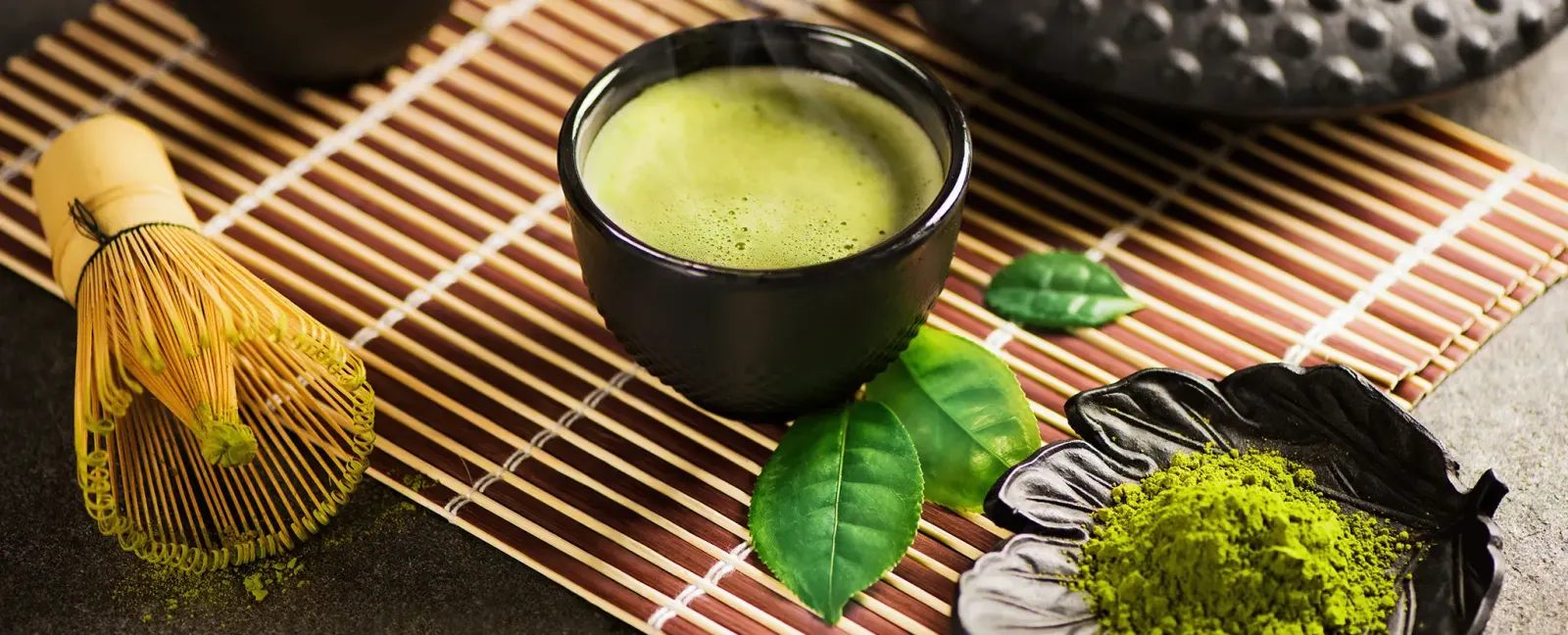Love green tea but looking to mix up your favorite cup? Meet your perfect Matcha!
Traditionally used as an integral part of formal Japanese tea ceremonies, Matcha is a form of green tea that has attracted a lot of attention in recent years, making cameos in everything from cakes and ice creams to lattes and milkshakes. It’s endlessly photogenic and has undoubtedly popped up in your Instagram feed, but we’re here to talk tea. Vivid green, bright and loaded with clean, grassy flavors, Matcha is essentially a finely powdered version of regular green tea. Our Matcha is crafted from the chlorophyll-rich leaves of the camellia sinensis plant that is shade grown. The leaves are steamed and dried, once the stems and veins are removed the leaves are ground into a fine powder. Packing a little more of a savoury umami hit than your typical green tea flavor, Matcha makes a wonderful place to start for tea-venturers looking to explore the greener end of the tea spectrum. Lipton’s Green tea with Pure Matcha can help you make the most of everyday. It gives you the uplift you need to stay focused and embrace whatever comes your way.
MATCHA TEA BENEFITS
Lipton’s Green Tea with Pure Matcha delivers the smooth, earthy taste of Matcha and the goodness of green tea. It’s the perfect addition to a healthy lifestyle!
Find your focus with Lipton’s Matcha. Legend has it that Buddhist monks used Matcha to focus during meditation and to be alert and present in the moment.
Green Tea with Matcha is a delicious way to help you achieve the recommended daily fluid intake of 2-2.5 liters a day.¹ The first ingredient in tea is water, which is needed by your body to run at its best. Tea is 99.5% water making it just as hydrating and refreshing as water.²³ Don’t be daunted by the chore of hydrating. Sit back, sip, enjoy!
Unsweetened tea contains zero calories: Choosing beverages with no added sugars in place of sugar-sweetened beverages can contribute to a healthy diet consistent with dietary guidelines.4
TEA TIME
While the journey of matcha tea is traditionally associated with Japanese tea ceremonies, nowadays Matcha green tea has undergone a boom in popularity and its vivid green color and cleansing flavor are featured across a host of food and drink formats. We like to keep things simple though, and think that with its revitalizing taste, Matcha is perfect for a moment of pause to reset and reenergize. Its bright flavor also pairs well with ginger and mint, making it a great partner with a fresh salad or a healthy mid-afternoon snack.
GET THE BEST FROM YOUR BREW
Is there any prettier tea than the emerald green brightness of a freshly brewed Matcha? It’s as much of a treat for the eyes as it is for the taste buds. To get the full benefits of Matcha tea , we recommend letting it brew in slightly cooled boiled water for 1.5 – 2 minutes, this should give it a tinge of haziness and a fresh, bright flavor with a hint of characteristic umami. And it can be enjoyed hot or cold! Lipton’s Green Tea with Matcha is a simpler alternative to traditional Matcha preparation, which involves sifting Matcha powder and vigorously whisking it into hot water. As a result, Lipton matcha tea can be used to make delicious recipes like three green super smoothie or a fruiter blend in a mango matcha smoothie.
BEYOND THE BREW
Now that you know the benefits of Matcha, find out about how Lipton benefits others through our sustainable sourcing practices and partnership with the Rainforest Alliance! Did you know that Lipton tea traces its roots back to 1890 when Sir Thomas Lipton imported his first shipment? Read about how he revolutionized tea to make it accessible to all here.
1. The European Food Safety Authority (EFSA) recommends 2L and 2.5L fluid intake per day for women and men, respectively
2. Ruxton CH and Hart VA. Black tea is not significantly different from water in the maintenance of normal hydration in human subjects: results from a randomized controlled trial. Br J Nutr. 106(4): 588-95, 2011.
3. Ruxton CH, Phillips F and Bond T. Is Tea a healthy source of hydration? Br Nutrition Foundation. Nutrition Bulletin, 40, 166-176.
4. U.S. Department of Health and Human Services and U.S. Department of Agriculture. 2015 – 2020 Dietary Guidelines for Americans. 8th Edition. December 2015.

